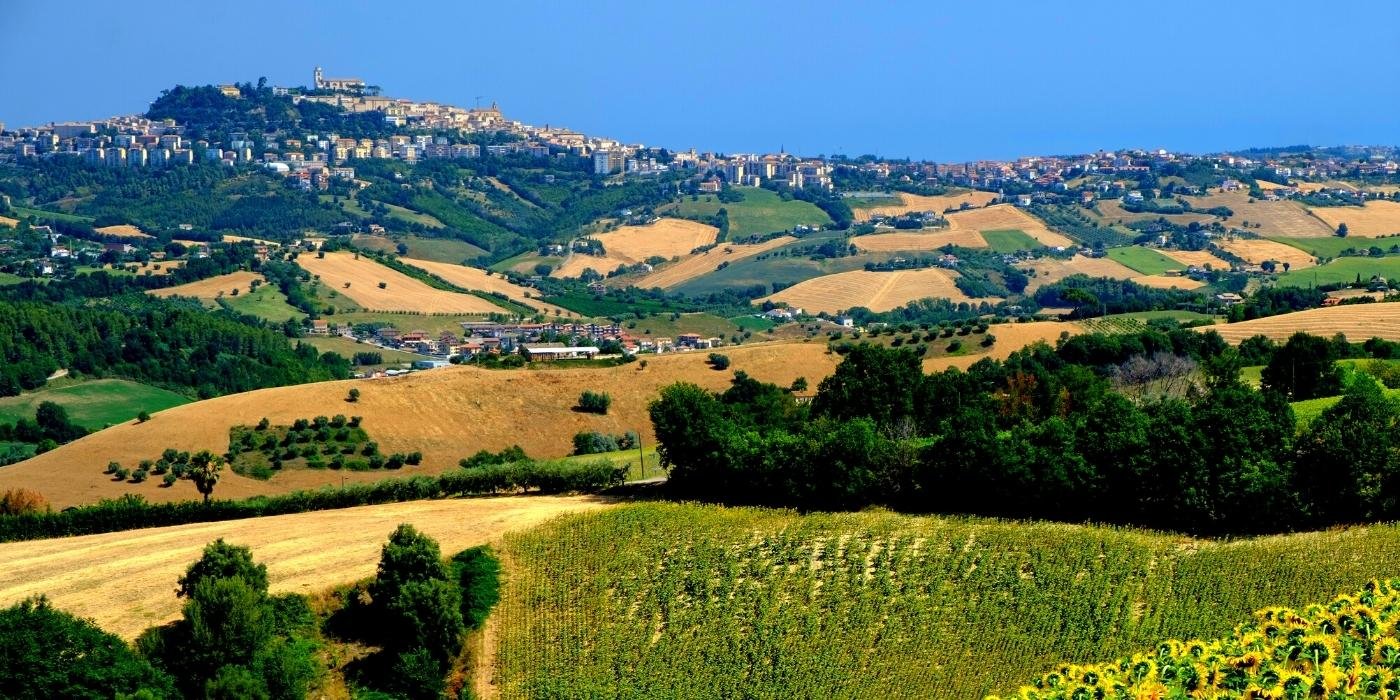What to see in Fermo: a thousand-year-old city in the Marche region
With that je ne sais quoi typical of such ancient, noble, and proud cities, Fermo is a delight for travelers. Whether for a few hours or a few days, this alluring city in the Marche region doesn't disappoint its visitors.
Culture and beauty have always been banners of its rich and fascinating history. Dense with artistic and natural points of interest, it exerts a magnetic attraction that contaminates the entire province.
Here is what you need to know about Fermo.
Discover more about FermoFermo, a timelessly elegant and noble city

Fermo seems almost like an old-fashioned lady. The city boasts a charm earned throughout the centuries with grace and vivacity. There is no escape: to meet her is to feel irresistibly attracted. You just have to play her game of seduction and let yourself be enveloped in a warm and exuberant atmosphere.
The Renaissance urban layout is a constellation of aristocratic palaces, churches, courtyards and squares, where contemporary-style clubs, restaurants and bars pops up at every corner.
Its Piazza del Popolo is probably one of the most beautiful squares in the region. Nevertheless, Fermo has plenty of arrows in its bow. Starting with a stately location on Colle Sabulo, a hill that dominates the wide and varied landscape of the region. You’ll see it in the distance, towering with its Duomo in the typical sweet and rounded silhouette of the most classic Italian scenarios.
Fermo's prosperous geography spans from the sea, with the beaches of the Adriatic just eight kilometres away, to the dramatic hinterland.
The surroundings are an exciting discovery. In the province of Fermo, you'll find many picture-postcard villages and towns dotting the hills up to the slopes of the Sibillini mountains.
Such a vast territory cannot but be perfect for varied outdoor activities, with trails suitable for trekking, mountain biking or horse riding.
The sea, which on this stretch of coast is ideal for sailing, windsurfing or kiting, is a few minutes' drive from the hilltop centre. Locations such as Lido di Fermo, Casabianca and Marina Palmense are excellent for enjoying moments of relaxation.
Where is Fermo
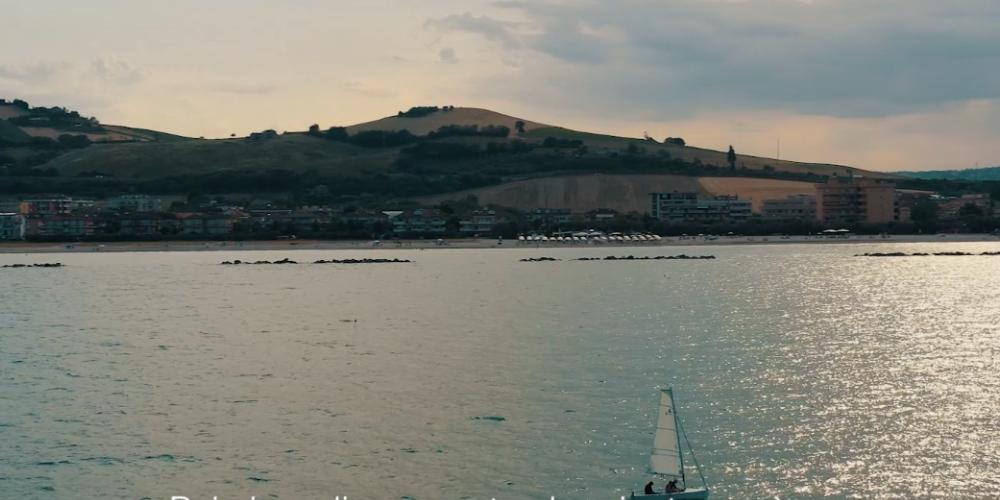
The city of Fermo, in Le Marche, is perched 320 metres high on the Sabulo hill. Easily reachable by car or bus and with the nearest airport in Ancona, it's in an excellent position to experience all the beauty the region offers.
The coast is only a few kilometres from the centre. At the same time, the surrounding territory is a continuous succession of nature trails and attractive cultural spots.
This peculiarity of a place immersed in diversity makes the city of Fermo an ideal destination for anyone—it's easy to experience the holiday you have in mind, whatever it may be.
The 8,200 kilometres of golden sand and white pebbles on the coastline touch Blue Flag resorts with beaches suitable for those travelling with children and four-legged friends.
Sandwiched between the countryside and the Adriatic, Fermo shares a constant succession of natural and civil landmarks, ancient villages, archaeological parks, abbeys and castles. Evidence of a thousand-year history.
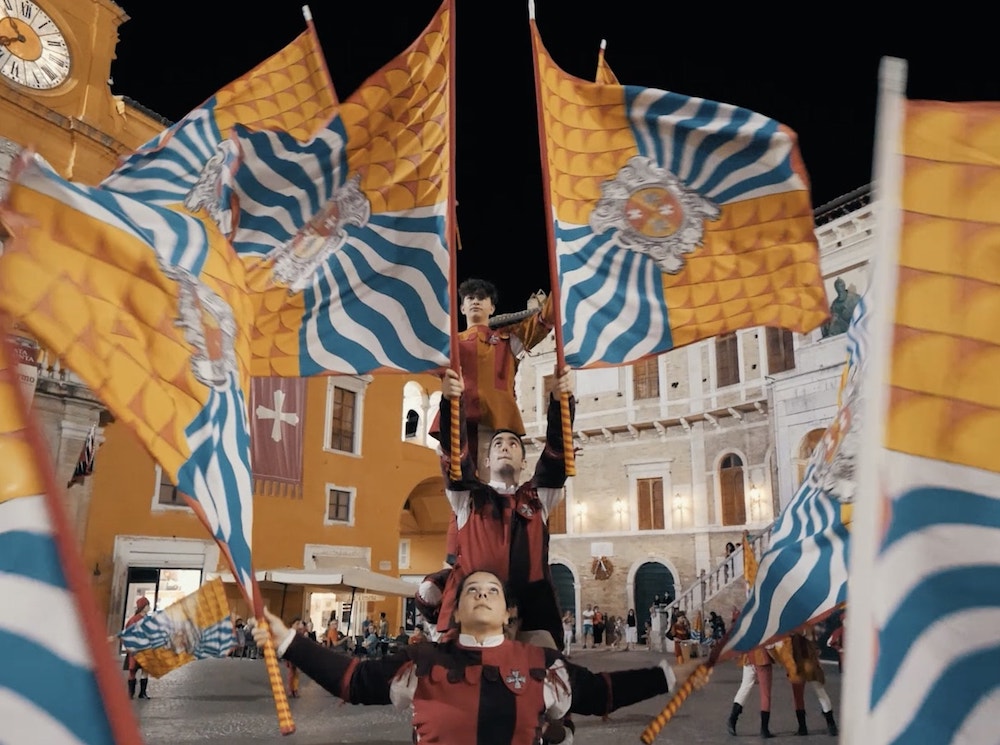


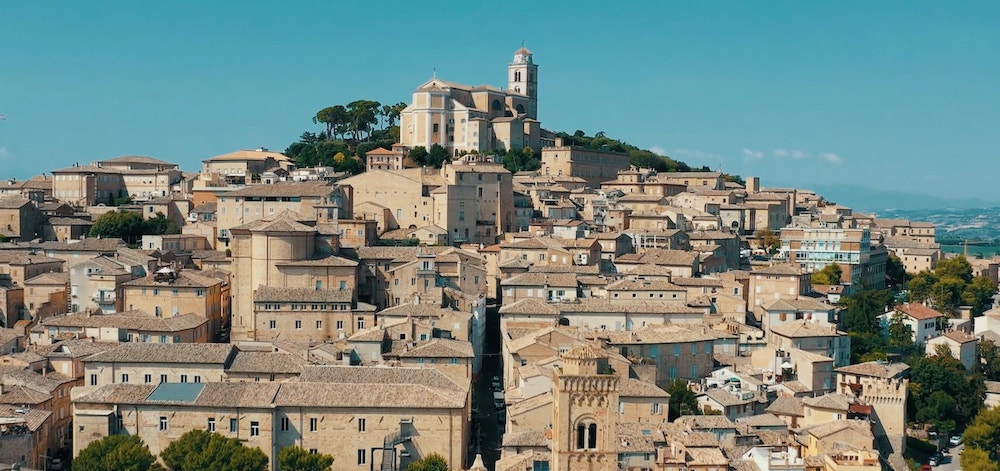
Fermo, a city with a thousand years of history
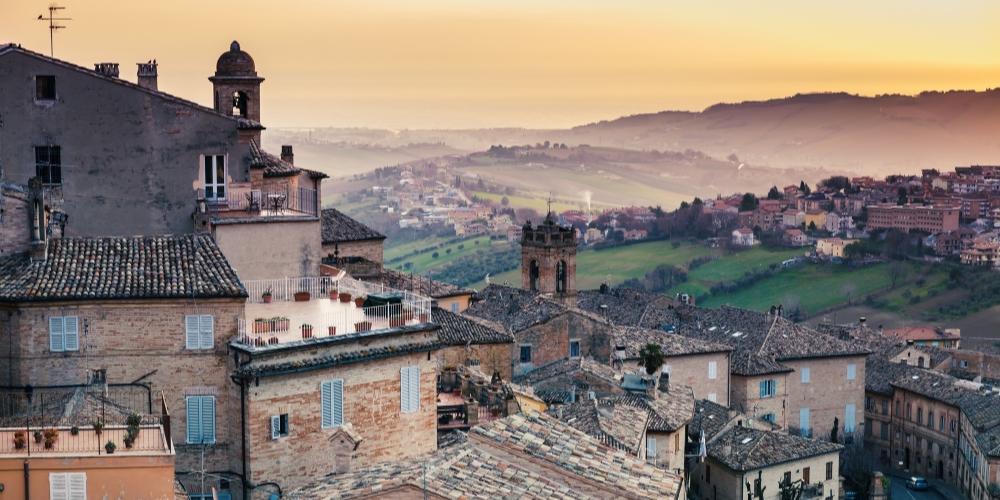
The city of Fermo has ancient origins. The first settlements around the Sabulo hill date back to the 9th century BC.
Wandering around, you can easily guess some of the past events that affected the area. For example, the Roman Cisterns, the remains of the old theatre, and the Castellum Firmanorum tell of the time when Fermo was a Roman colony.
Likewise, in an ideal walk through the history of this city, you bump into the court of Amalasuintha, mother of Ostrogothic king Athalaric. You become acquainted with the ancient administration of duces and iudices desired by the emperor Justinian. One learns that the Episcopate initiated a massive evangelisation of the countryside in the 5th century; witnesses the passage of the Lombards; and learns that in the 10th century the foundations were laid in Fermo for the current Marche Region.
A university town since the 16th century, the seed of culture was actually planted in Fermo much earlier. At least in 825, when King Lothair founded a prestigious studium that was the first university of the Duchy of Spoleto.
A free municipality since 1199, it was ruled by Venetian consuls and podestà, popes and lords of the most powerful families of Medieval and Renaissance Italy. Each left marks still visible today through streets, churches and palazzi. If you know how to read it, Fermo will reveal its past steeped in an intense and alive history.
After a long period of political unity with its long-time rival, Ascoli Piceno, Fermo became a province again in 2004.
Discover the province of Fermo: what to do and see among villages, woods and beaches
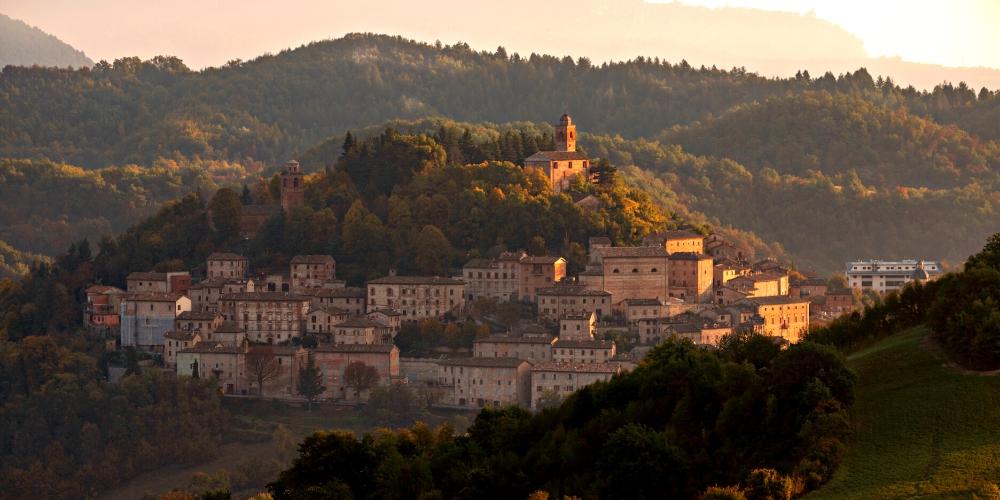
Montefortino
The province of Fermo is a puzzle of ever-changing landscapes and atmospheres. The city's surroundings are a tandem of hills, vineyards, woods and charming villages.
Some of the most popular seaside resorts in the Marche region are just a few kilometres from Fermo, with places like Lido di Fermo, Casabianca, Marina Palmense, Porto San Giorgio or Porto Sant'Elpidio.
On the main road leading to the coast, Villa Vitali, with its gardens and the open-air arena, enlivens the Fermo summer with an exciting theatre and music festival in an enchanting setting.
The walk to the gorge called 'dell'Infernaccio' is the prelude to a series of routes and natural attractions much appreciated by the locals, such as the source of the Tenna River, the Hermitage of San Leonardo and an enchanting hidden waterfall.
Also, enclosed in the province of Fermo are towns and villages to visit with exquisite slowness. Many of them are included in the prestigious circuit of Borghi Più Belli d'Italia.
Torre di Palme is a lovely medieval centre overlooking the Adriatic Sea, seated on the top of a hill surrounded by greenery. Nearby, il Bosco del Cugnolo, a Protected Floristic Area, offers the opportunity for walks in the shade of Mediterranean vegetation. If steep slopes do not frighten you, you can climb up to la Grotta degli Amanti with the help of a rope. According to legend, the grotto was the last refuge of a couple of unfortunate lovers.
Servigliano boasts an extraordinary history that distinguishes it from all other nearby villages. It was built in the 18th century as an 'ideal town' according to Enlightenment architectural standards.
Moresco, a small and delightful honey-coloured village of just one hundred souls, hosts the annual ciauscolo festival, a celebration of the typical Marchigiano salami.
Remaining on the theme of culinary fairs, Diamanti a Tavola, a highly prized event dedicated to the white truffle of the Sibillini Mountains, takes place in Amandola, Orange Flag of the Italian Touring Club.
The hawks that nest on the high cliff where Montefalcone Appennino towers over the countryside gave the name to this dizzyingly beautiful borgo with a scenic fortress.
These are just a few suggestions for a trip in such a magnetic region. But visiting Fermo means much more. It's an experience that fills your heart with beauty. Because beauty, here, is everywhere.
The historic centre of Fermo
Step by step, the deeper you go into the heart of Fermo's historic centre, the more it will become clear how much this city owes its appearance to an ancient—Roman, Medieval and Renaissance—urban heritage. Streets that turn into narrow, winding alleys skirt a built-up area of houses and palaces so tall to remind a metropolis of the past.
Being in a raised position, it's not surprising to see panoramic terraces that open up amidst the warm ochre of the façades. For instance, a route that touches the Matteucci tower, the Abbey of San Marco alle Paludi, the Girfalco park and the Cathedral offers enchanting views.
The arrival in the city is immediately impressive, with a coup de théâtre guaranteed by Piazza del Popolo, one of the first attractions you'll encounter. 135 metres long and 34 metres wide, it's a harmonious and rigorous backdrop framing some of Fermo's most storied buildings. Formerly known as Piazza San Martino and Piazza Vittorio Emanuele, what has remained unchanged is its vocations as the beating heart of Fermo's social life.
Piazza del Popolo was designed in the 15th century, but the current appearance is due to 1659 renovation works. Two long, scenic terracotta porticoes line its sides together with a series of buildings of great artistic and historical value.
Palazzo dei Priori, today the seat of the Fermo Civic Art Gallery; the 16th-century Palazzo Apostolico; Palazzo degli Studi, featuring the Romolo Spezioli library inside; la Loggia di San Rocco; and the church of San Martino.
From Piazza del Popolo, continue towards the highest part of Fermo, Piazzale del Girfalco. In between, streets and lanes are a pleasure to walk along. Not only the main boulevards—Via Mazzini, Corso Cefalonia and Via dell'Università—but also multiple small lanes to wander in search of a hidden treasure: a traditional bottega, a bistro with typical specialities, or an artistic portal.
Conquer the top of Sabulo Hill to reach the Metropolitan Cathedral of Santa Maria Assunta. Tall and majestic in the austerity of its Romanesque-Gothic facade, it's right in the middle of the Girfalco park. You'll have the whole city at your feet, with Mount Conero, Mount Ascension and the Adriatic coast lined up to the horizon.
The Globe Room in Fermo
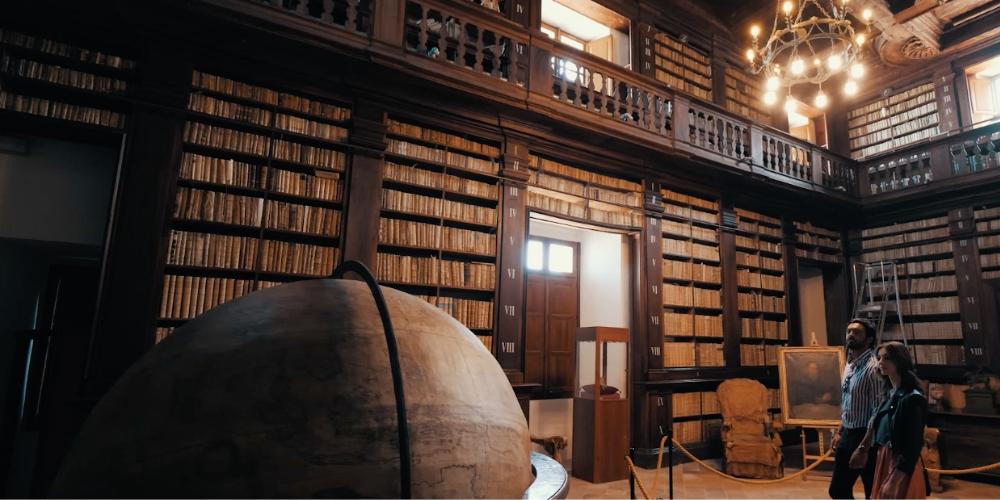
The Globe Room (Sala del Mappamondo) is the most famous room in the Palazzo dei Priori, in Piazza del Popolo. This historic building welcomes visitors with a scenic double staircase, to be walked under the watchful eye of Pope Sixtus V.
Although the current façade and the statue of the pontiff (a former bishop of Fermo) date back to the 16th century, the building is much older. It's the result of the union between the 14th-century Palazzo of Rinaldo di Giorgio and the church of San Martino.
A series of grand reception rooms occupy the first floor of the building. Among them, the Portraits Room that used to be Fermo's theatre.
Since 1981, the Civic Art Gallery (Pinacoteca Civica) has also been located here, with an array of paintings, costumes, porcelain and furnishings of great value. However, among all the valuable works preserved, one painting stands out: The Adoration of the Shepherds by Rubens.
The real gem of this museum is beyond a door on the second floor. Above the entrance, a medallion shows the name 'Cristina', a tribute to Christina of Sweden. The queen was a good friend to Decio Azzolino, the Fermo cardinal who commissioned the room.
The large wooden hall—a rich library with 3,000 manuscripts, 127 codices, 300,000 volumes, more than 800 historical journals, 5,000 drawings and 6,500 engravings, coins, seals and various relics—once hosted shows and dances and was not spared by several fires that made entertaining activities cease. The books are arranged in order of size: from the bulkiest, occupying the bottom shelves, to the smallest, higher up.
The highlight is right in the middle: an impressive globe measuring 5.68 metres in circumference and 1.85 metres in diameter. It dates back to the 18th century and was designed by Silvestro Amanzio Moroncelli, Queen Christina's cosmographer.
The imposing globe gives name to the room, Sala del Mappamondo (the globe room). The sphere is entirely covered with Fabriano royal paper and supported by a wooden structure made by Filippo Morroni di Fermo. It's impossible to remain indifferent.
Theatre of Fermo
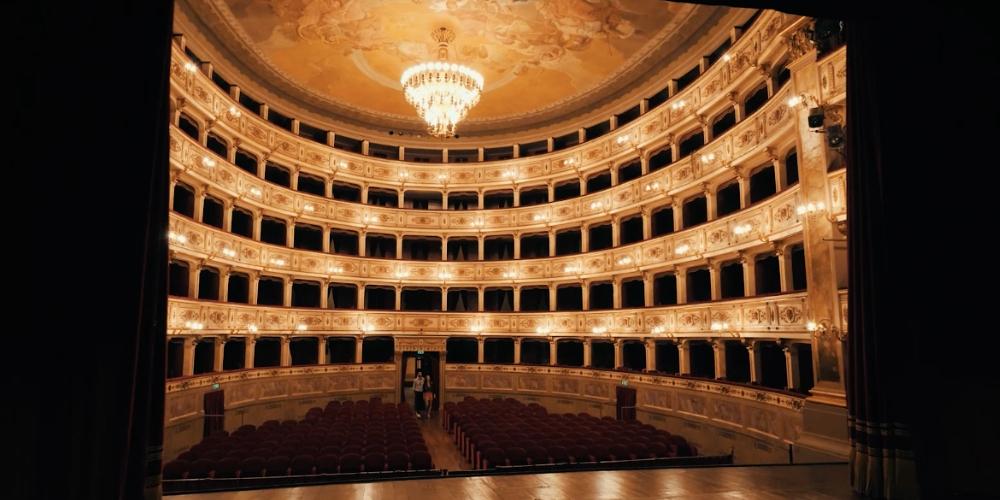
This theatre, the largest opera house in the region, is a symbol of Fermo, just like the eagle depicted on the city's coat of arms and from which it takes the name. Teatro dell'Aquila dates back to the late 18th century when it replaced la Sala Grande. Until then, this wooden room in Palazzo dei Priori was the site designated for shows and concerts.
There is no monumental façade. Still, beyond the sober entrance, it conceals an exquisitely elegant hall with a splendid tempera-painted ceiling and a majestic fifty-six-arm wrought-iron chandelier made in Paris.
Located in Via Mazzini, it used to be a true landmark for the people of Fermo, a place for meeting, culture and entertainment.
Fermo's Theatre has picked up the baton of a rich and varied musical and theatrical heritage, with a wide calendar of events, including music and prose performances and an exciting opera and symphonic concert season.
Roman Cisterns
Fermo's Roman cisterns are among the world's oldest and most imposing structures of their kind, a unique water system of impressive dimension (2,200 square metres) from the Augustan period.
This complex and ingenious underground hydraulic system is made up of three reservoirs. The first, on the Girfalco, is entirely underground and therefore cannot be visited. The second, in Largo Temistocle Calzecchi Onesti, is known as Piccole Cisterne (little cisterns), a smaller environment compared to le Grandi Cisterne in Via degli Aceti.
This charming paved street hides the ancient medieval access to the third archaeological site, featuring thirty perfectly preserved communicating rooms arranged along three parallel rows.
In addition to the magnificence of the high vaulted rooms, what is even more astonishing is that some were in use until a few decades ago.
Used by the population during the Second World War as a shelter during bombardments, the Roman cisterns are undoubtedly one of the places you shouldn't miss in Fermo.

